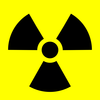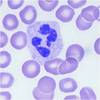Semester Review Flashcards
Confidentiality
All information about a patient is protected
Phlebotomy
The practice of drawing blood; to cut into a vein
Accreditation
Official approval of a program from a professional organization
Certification
Verification that an individual has demonstrated proficiency in a particular area of practice
Licensure
A document permit issued by a government agency that grants the bearer permission to provide a particular service or procedure
ASCP
American Society for Clinical Pathologist
NAACLS
National Accrediting Agency for Clinical Laboratory Sciences
ASPT
American Society for Phlebotomy Technicians
AMT
American Medical Technologist
List the regular duties of a phlebotomist
Obtain blood samples, adhere to safety regulations, keep accurate records
What is the first step you perform in a routine blood collection?
Identify the patient
What does the Health Insurance Portability and Accountability Act of 1996 (HIPPA) regulate?
Privacy of medical information
CCU
Coronary Care Unit or Cardiac Care Unit
CLIA
Clinical Lab Improvement Act of 1988
MT
Medical Technologist
RN
Registered Nurse
GTT
Glucose Tolerance Test
RBC
Red Blood Cell
SST
Serum Separator Tube
HMO
Health Maintenance Organization
JCHAO
Joint Commission on Accreditation of Healthcare Organizations
Hemolyzed
Breakage of red blood cells and blood Blood serum has a pink tinge
Icteric
Increase in the amount of bacteria in the serum Blood is dark yellow
Lipemic
Caused by recent ingestion of lipids or fats Blood is milky white and cloudy
Autologous Donation
Donating own blood for use at a later time
Electrolytes
A group of tests that evaluate the levels of minerals in the blood
Reference Lab
An independent lab that analyzes samples from other healthcare facilities
Which category of administrative services does the laboratory fall under?
Professional Services
Which type of health organization typically employs phlebotomist?
Hospitals
Pharmacy
Prepares and dispenses drugs that have been prescribed by physicians
Coagulation
Performs prothrombin times & checks for clotting by factors and platelets
Microbiology
Isolates and identifies pathogenic microorganisms Performs Culture & Sensitivity
Immunohematology
Deals with blood used for transfusions Preforms compatibility testing
Toxicology
Analyzes plasma for levels of drugs and poisons
Hematology
Analyzes blood for evidence of disease affecting blood forming tissues Performs CBCs
Chemistry
Tests chemical components of blood
Urinalysis
Urine is examined to assess kidney disease and metabolic disorders Uses reagent strips
Who is usually the director of the hospital clinical laboratory?
Pathologist
OSHA
Occupational Safety and Health Administration Informs workers about hazards in the workplace and protects workers from harm
FDA
Food & Drug Administration
MSDS
Material Safety Data Sheet Provides information about chemicals in hazards and provides procedures for cleanup and first aid
Anaphylaxis
A rapid severe immune reaction that can be deadly
Allergic Contact Dermatitis
True allergic response to proteins of latex are absorbed through the skin or by inhalation of powder
Irritant Contact Dermatitis
Reaction to direct skin contact with materials left on the latex during manufacturing
Sensitivity
Reaction to latex protein and glucose and other medical equipment usually is to contact dermatitis
Biological
Infectious agents such as bacteria and viruses
Chemical
Preservatives and reagents
Flammable
Open flames, oxygen, and chemicals
Physical
Wet floors and heavy lifting
Sharps
Needles, lancets, and broken glass
What is the first thing you should do if you have been struck with a used needle?
Flush the exposed area with water and clean it with soap and water or skin disinfectant
What is the first up you should take if you see smoke and flames in the laboratory?
Pull the fire alarm RACE
Be familiar with the precautions to take to reduce risk from hazardous chemicals
Never add water to acid; add acid to water Follow the written chemical hygiene plan Never mix chemicals unless following an approve procedure Never store chemicals above eye level Know the locations of safety showers and eyewash stations
Be familiar with the steps to giving breathing Aide
Determine if the victim is conscious Place on from flat surface Open airway Check for breathing Pinch nostrils Give two slow breaths
What is the first thing you should do it in the event of an electrical shock?
Turn off the equipment and remove the source of shock
Infection
Invasion by and growth of a microorganism in the human body that causes disease
Fomite
Contaminated object
Reservoir
A person caring an infectious agent without being sick
Healthcare Associated Infections
Infections contacted by a patient during a hospital stay
HEPA
High Efficiency Particulate Air Filtration
Vector Transmission
Transmission of infectious agents by organisms that are not harmed by either presence
Standard Precautions
Infection control method that uses barrier protection and work control practices to prevent direct skin contact with blood, other body fluids, and tissue from all persons
Common Vehicle Transmission
Means of contaminated object such as food, water, medications devices, and equipment
Airborne Infection
particles that contain infectious microorganisms
Isolation
The separation of an infectious source from susceptible host breaking the chain of infection
Pathogen
Infectious organisms
What is the best way to prevent the spread of infection?
Washing hands
How long should you scrub your hands together when you were washing them?
15 seconds
What sort of disinfectant should be used against blood-borne pathogen?
10% bleach
When are Airborne precautions used?
For patients known for or suspected to have a disease transmitted by air infectious nuclei
When are droplet precautions used?
For patients known or suspected to have a disease transmitted by large infectious nuclei
When are contact precautions used?
For patients with diseases or conditions transmitted by direct contact








